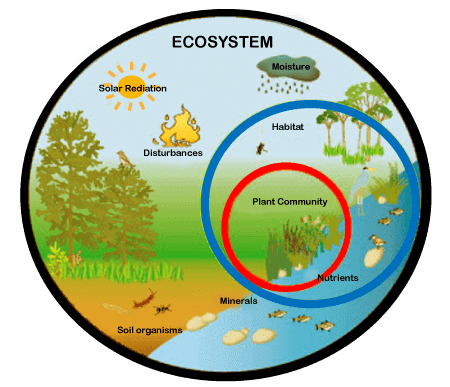Class 7 Social Science Chapter 1 Question Answers - Environment
Q1: Define environment.
Ans: Whatever we see surrounding us is our environment. It is our basic life support system. The environment provides the air we breathe, the water we drink, the food we eat and the land where we live.
Q2: What is Lithosphere?
Ans: The Lithosphere is the solid crust or the hard-top layer of the earth. It is made up of rocks and minerals and covered by a thin layer of soil. It is an irregular surface with various landforms such as mountains, plateaus, plains, valleys, etc. Landforms are found over the continents and also on the ocean floors.

Q3: What is Atmosphere?
Ans: The atmosphere is the thin layer of air that surrounds the earth. The gravitational force of the earth holds the atmosphere around it. It protects us from the harmful rays and scorching heat of the sun. It consists of a number of gases, dust, and water vapor. The changes in the atmosphere produce changes in the weather and climate.
 Atmosphere
Atmosphere
Q4: What is Biosphere?
Ans: The biosphere is the global ecosystem where all living organisms, including plants and animals, coexist and interact. It is a narrow zone on Earth where land, water, and air come together, enabling life to thrive. This unique region supports various ecosystems, promoting biodiversity and interconnectedness. The biosphere plays a crucial role in maintaining the balance of Earth's natural systems and is essential for the survival of all living beings.
 Biosphere
Biosphere
Q5: What is the significance of maintaining a harmonious relationship with the environment?
Ans: Maintaining a harmonious relationship with the environment ensures sustainability, ecological balance, and the well-being of both humans and the natural world.
Q6: What is the difference between biotic and abiotic components of the natural environment?
Ans: Biotic components refer to the living organisms in the environment, such as plants and animals, while abiotic components refer to the non-living elements, such as land and air.
Q7: How does the barter system relate to the human environment?
Ans: The barter system is a trade in which goods are exchanged without the use of money. It relates to the human environment by showcasing how humans interact with their surroundings to fulfill their needs. In earlier times, when monetary systems were not prevalent, people relied on the resources available in their environment for sustenance and trade. The barter system led to economic relationships and the development of human-made environments such as markets and trade routes. It demonstrates how human beings used and changed their environment to meet their requirements through the exchange of goods and services.
Q8. What is Hydrosphere?
Ans: The hydrosphere is the domain of water. It comprises various sources of water. The different water bodies like rivers, ponds, seas, oceans, etc are its major components. The hydrosphere is essential for the support of life on this planet. 
Q 9. Why is it important to study Natural Environment?
Ans: Many reasons make it important to study the Natural Environment such as -
- It helps us to understand the diversity, nature, and mechanism of operation of various forces on the earth.
- We can understand the impact of man’s activities on the Environment.
- The origin and distribution of surface, features of land can be studied only when we have a total view of the environment.
- Even when we study only a certain part of the earth, we can establish the relationship only when we have a view of the totality of the environment.
- Since we live only on the surface of the earth, the study of the atmosphere and oceans becomes essential because of their interactive and interdependent nature.
Q 10. What is an ecosystem?
Ans: An ecosystem is a system formed by the interaction of all living organisms with each other and with the physical and chemical factors of the environment in which they live, all linked by the transfer of energy and material.
 Depiction of Ecosystem
Depiction of Ecosystem
|
67 videos|336 docs|46 tests
|
FAQs on Class 7 Social Science Chapter 1 Question Answers - Environment
| 1. What are some ways to reduce plastic waste in the environment? |  |
| 2. How does deforestation impact the environment? |  |
| 3. What are the effects of pollution on the environment? |  |
| 4. How can individuals contribute to protecting the environment? |  |
| 5. Why is it important to preserve natural habitats and biodiversity? |  |

|
Explore Courses for Class 7 exam
|

|













